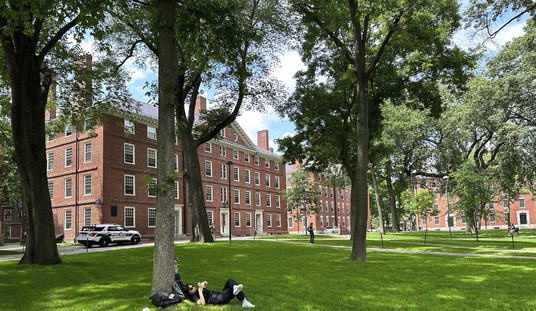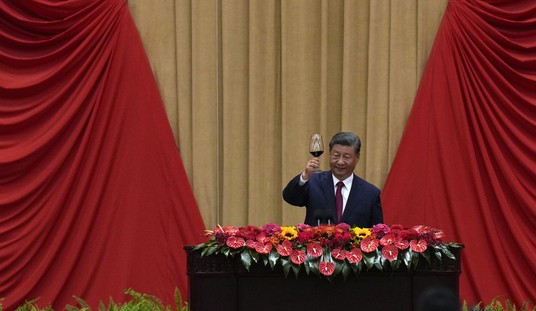It is said, “Trade wars are good and easy to win.”
Reality is trade wars are the sort of conflict where most casualties are innocent bystanders. They’re complicated with a wide variety of facets which include negotiations, offers, and counter-offers. The deals are typically done in private, yet it appears the current administration is taking things public in hopes of sparking some sort of movement.
President Donald Trump released a series of tweets – before following them up with comments to the media outside the White House – where he threatened to slap a 10% tariff worth $300B on Chinese goods.
“We have rebuilt China,” the president declared to reporters on Thursday. “So now it’s time that we change things around. If they don’t want to trade with us anymore, that would be fine with me. It would save a lot of money…They’re paying for these tariffs, we’re not.”
Trump appears to view these negotiations like a business deal or some sort of medieval king who enjoys a wide swath of power over the economy. The federal government does exert a bit of monarch-like force over the economy, through its various growth-stunting regulations and taxes, but it should be blunted by the invisible hand of the market. A hand battered and bruised for decades by a federal government looking to contort its actual fingers over the invisible ones.
The theory is Trump is simply negotiating through the media. It’s an annoying habit mostly done by the owners of sports teams or player agents when there’s some sort of stalemate or contract dispute. Braggadocious bravado may work in the West but it isn’t exactly something to take onto the international stage – especially with China.
“I think the particular problem here is China’s sensitivity,” Simon Lester with Cato Institute’s Herbert A. Stiefel Center for Trade Policy Studies told me over the phone. “[F]eeling that historically it’s been treated badly by Western powers, and so, you know, you look at and say in this context you’re just making it difficult for China to make concessions because then they’ll look like they caved in to your pressure. He’s taking what he learned somewhere else and applying it in a context where I’m not convinced that it makes sense.”
Lester’s notion makes sense. China issued a forceful response Friday with Foreign Ministry spokesperson Hua Chunying vowing, “If the US implements the tariff measures, China will have to take necessary countermeasures to resolutely defend the core interests of the country and its people.” She also said China wasn’t interested in a trade war while the Ministry of Commerce swore America would “bear all the consequences.”
Trade wars do not end well – as both America and China are soon to find out. Chinese-American investment is at a five year low, according to a May study by the Rhodium Group, with a humongous drop in Chinese investment in America from $46B in 2016 to just $8B last year. American investment in China is mostly steady at $13B last year. The bulk of China’s money flow into the U.S. appears to be in the last decade.
Both governments appear to share blame for the economic stagnation. China has put tighter controls on money while the Committee on Foreign Investment in the United States (a group which appears to be more secretive than the NSA) is doing more and more reviews of foreign dollars coming into the country. Blacklisting companies certainly isn’t helping, as The Dallas Morning News reports Futurwei – the research arm of China-based Huawei – is laying off dozens because the federal government is refusing to let it do business with American companies. It also cannot share any technology with Huawei making it akin to a dying fish flopping around on a beach. Americans are the ones losing out on work – not the Chinese.
“The combined effect of Trump’s trade policy and relations with China has been to place barriers on trade and place barriers on investment,” Lester observed with the warning it wouldn’t turn out all wine and roses in the end. “Most economists will say, ‘Hey, that’s bad. That’s bad for us. We want Chinese investment to come in and we want investment over there. We want, you know, to do business together. That’s better for the economy.’ I think Trump sees it differently and he thinks he’s all about deal-making and he’s thinking, perhaps, the Chinese are hurting from all of this and, you know, the U.S. economy is doing well.”
Except when soybean farmers have to be bailed out by the government due to retaliatory tariffs. This type of big government ‘solution’ only damages the economy because it increases government debt and taxpayer burden. This is the danger America is running into as it decides to fight China via trade. Prices on certain goods will shoot up depending on where companies buy their components for products. The economy will stagnate because consumers will probably pass on certain purchases.
“I don’t know what the president’s endgame is here,” R Street Institute’s Trade Policy Counsel Clark Packard emailed after being asked to crawl into the President’s head. “Does he want China to purchase more American soybeans and other agriculture products? Does he want to close the trade deficit? I don’t think they’re focused on the real, legitimate issues we have with China’s trade policy practices that were elegantly documented in USTR’s Section 301 report — cyber intrusions into commercial systems, abuse of intellectual property, forced technology transfer, etc.”
The peril is apparent for both sides.
The United States is enjoying a steadily low unemployment rate; however, the economy dropped an entire percentage point last quarter. Fed Chair Jerome Powell said Wednesday he was worried about the global economy and cut interest rates to keep America’s economy steady. The New York Fed is concerned about nondefense capital goods. The Economist wrote banks are jittery about investment, especially because of the trade policy. America’s economy is more diverse due to liberalization, but the economy runs in cycles.
Let’s also not forget, despite the president’s boasting of the opposite, any rising costs from tariffs will be passed on to the consumer. Prices will rise and the economy will slow down. One should not forget the sins of 1930 when the Smoot-Hawley Tariff Act passed. The retaliation exacerbated the Great Depression and led to the humongous expansion of government through the New Deal. Former President George W. Bush enacted massive tariffs on steel in 2002. The same tariffs were rescinded 18 months later because they damaged the economy. Protectionism will do the opposite of what proponents believe.
China’s situation is more unstable. Their economic downward slump is over a decade old partly due to local government debt and partially due to its federal rules. China is still communist, despite the reforms it’s done over the years, meaning the government owns (or backs) a majority of industry. The government is at a crossroads because it can either liberalize more or tighten its control over industry under the misguided belief it will ‘save’ it. Liberalization will save China, not attempting to do any sort of shovel ready project.
It’s understandable why Americans might want to see the Chinese economy fall into more ruin. The Chinese have a reputation, for good reason, of industrial espionage and currency manipulation. Their government has a horrific human rights record and corruption is rampant. Their government-owned media seeks to portray people with legitimate grievances towards the government as terrorists. The politicians are bad actors.
Those who disregard the damage done to China by this trade war would do well to consider the likely results. China’s government faces three options in the face of imminent obliteration: more powerful government, revolution, or reform.
Option one and two are historically intertwined. Revolutionary movements start within a country due to an overarching and forceful government. Conflict – sometimes philosophical, sometimes armed – occurs. The government attempts to squelch the rebellion through a show of force causing more and more resentment. It eventually descends into civil war. The victors are sometimes liberals but more often groups seeking to push an even stronger form of government with more atrocities and few freedoms.
Option three is more desirable. It involves the peaceful spread of freedom, liberalism, and free markets over a longer period of time. The loosening of regulations and private ownership give individuals more power. It allows liberty’s seed to spread throughout a country – forcing more peaceful reforms and changes. Conflict still ensues, in certain instances, but most often the reforms involve a minimal amount of bloodshed and the changeover is almost seamless. This tends to be the exception to the rule but is the most desirable and what Americans should support.
There is no reason to get into a trade war with China. They are not easy to win and only end up hurting those businesses they seek to ‘protect.’ The real solution is free trade – real free trade with no tariffs – because it encourages goodwill across the globe. It benefits everyone from the consumer to the worker to the business owner. The fact only a few seem to realize this is disappointing.








Join the conversation as a VIP Member